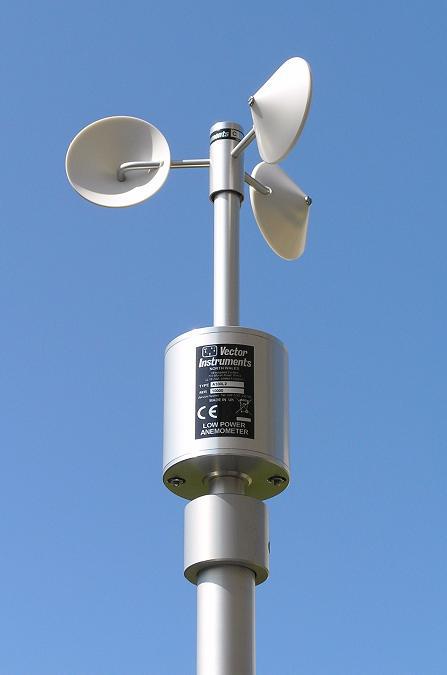Comprehending Various Kinds Of Anemometers for Various Applications
Anemometers Unveiled: Comprehending Their Relevance in Ecological Surveillance and Safety Steps
The role of anemometers in environmental monitoring and precaution is typically ignored, yet their value is obvious. These instruments have a long history rooted in clinical questions and technical advancements, advancing to become vital tools in various fields. From meteorology to aeronautics safety and security, anemometers play a critical function in supplying precise data that educates decision-making procedures and improves total safety and security. Comprehending the complexities of anemometers unveils a world of essential understandings that are fundamental to our understanding of the setting and the procedures we require to ensure safety and security.
History of Anemometers
The advancement of anemometers can be traced back to the old people where fundamental wind gauging tools were very first used. These very early wind measurement tools laid the foundation for the development of extra innovative anemometers with time. One of the earliest known anemometers was the hemispherical mug anemometer invented by Leon Battista Alberti in the 15th century. This style contained four hemispherical cups that collected wind energy, giving a measurement of its intensity based on the speed of rotation.
Over the years, developments in innovation led to the advancement of more modern anemometers, including ultrasonic anemometers and laser Doppler anemometers, offering boosted accuracy and effectiveness in determining wind speed and instructions. The history of anemometers showcases an exceptional journey of development and progress in the area of meteorology.
Kinds Of Anemometers
Throughout the area of meteorology, different kinds of anemometers have actually been created to accurately measure wind rate and instructions. Sonic anemometers make use of ultrasonic signals to measure wind rate and instructions properly. Hot-wire anemometers operate based on the principle that the cooling result of wind on a heated cable is symmetrical to the wind speed.
Applications in Meteorology
Having actually discussed the various kinds of anemometers used in weather forecasting for gauging wind rate and direction, it is important to discover their sensible applications in the area. Anemometers play a vital role in weather forecasting by offering real-time and exact information on wind conditions (anemometer). Meteorologists make use of anemometers to monitor wind speed and instructions to anticipate climate patterns, problem cautions for serious weather condition occasions like storms, storms, and tornadoes, and analyze climatic conditions for air travel safety
In meteorology, anemometers aid in comprehending regional and regional wind patterns, which are essential for anticipating weather adjustments and establishing climatic fads. These tools are likewise used in research to research microclimates, metropolitan heat islands, and air pollution dispersion. In addition, anemometers are utilized in Get More Info agriculture to maximize crop administration methods, such as irrigation and chemical application, based on wind problems.
Importance in Air Travel Security
An important aspect of making certain air travel security hinges on the careful surveillance of wind conditions making use of anemometers. Anemometers play a crucial function in aviation by supplying real-time information on wind speed and direction, helping pilots in making informed decisions during liftoff, touchdown, and trip. Strong and uncertain winds can substantially affect aircraft procedures, making it necessary for aviation authorities to depend on exact wind measurements to make certain the security of guests and team.

In the vibrant atmosphere of aviation, where even small changes in wind rate and instructions can have extensive effects, anemometers stand as essential devices for promoting risk-free and safe and secure flight.
Function in Environmental Research
Exactly how do anemometers add to advancements in ecological study? Anemometers play a critical role in ecological research study by giving vital information on wind rate and direction. This info is vital for recognizing numerous atmospheric processes, such as air pollution diffusion, weather condition patterns, and environment adjustment. By properly measuring wind qualities, anemometers help researchers examine the activity of toxins airborne, assess the influence of industrial emissions, and forecast the spread of contaminants in the environment.


Verdict
In conclusion, anemometers have actually see this site played a vital function in ecological tracking and safety and security procedures. Comprehending the significance of anemometers is crucial for precisely measuring wind rate and instructions, which is important for predicting weather condition patterns, guaranteeing secure air travel operations, and conducting ecological studies.
One of the earliest well-known Click Here anemometers was the hemispherical cup anemometer designed by Leon Battista Alberti in the 15th century. Over the years, improvements in modern technology led to the advancement of more contemporary anemometers, consisting of ultrasonic anemometers and laser Doppler anemometers, providing raised accuracy and efficiency in gauging wind speed and direction. Hot-wire anemometers run based on the principle that the cooling result of wind on a heated cable is proportional to the wind speed. Meteorologists utilize anemometers to monitor wind speed and direction to forecast weather condition patterns, problem warnings for extreme weather occasions like storms, tornadoes, and typhoons, and examine atmospheric problems for air travel safety.
Understanding the importance of anemometers is essential for precisely gauging wind rate and instructions, which is vital for predicting weather condition patterns, ensuring risk-free air travel procedures, and carrying out ecological research studies. (anemometer)